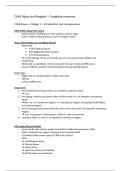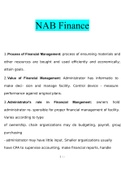Summary
Complete Summary- Child Abuse and Neglect (6475ABUSEY)
- Course
- Institution
De complete samenvatting met al het materiaal voor het vak 'Child Abuse and Neglect'. Inclusief alle hoorcolleges and artikelen. Complete summary of all the literature and lectures of the course 'Child Abuse and Neglect'
[Show more]




